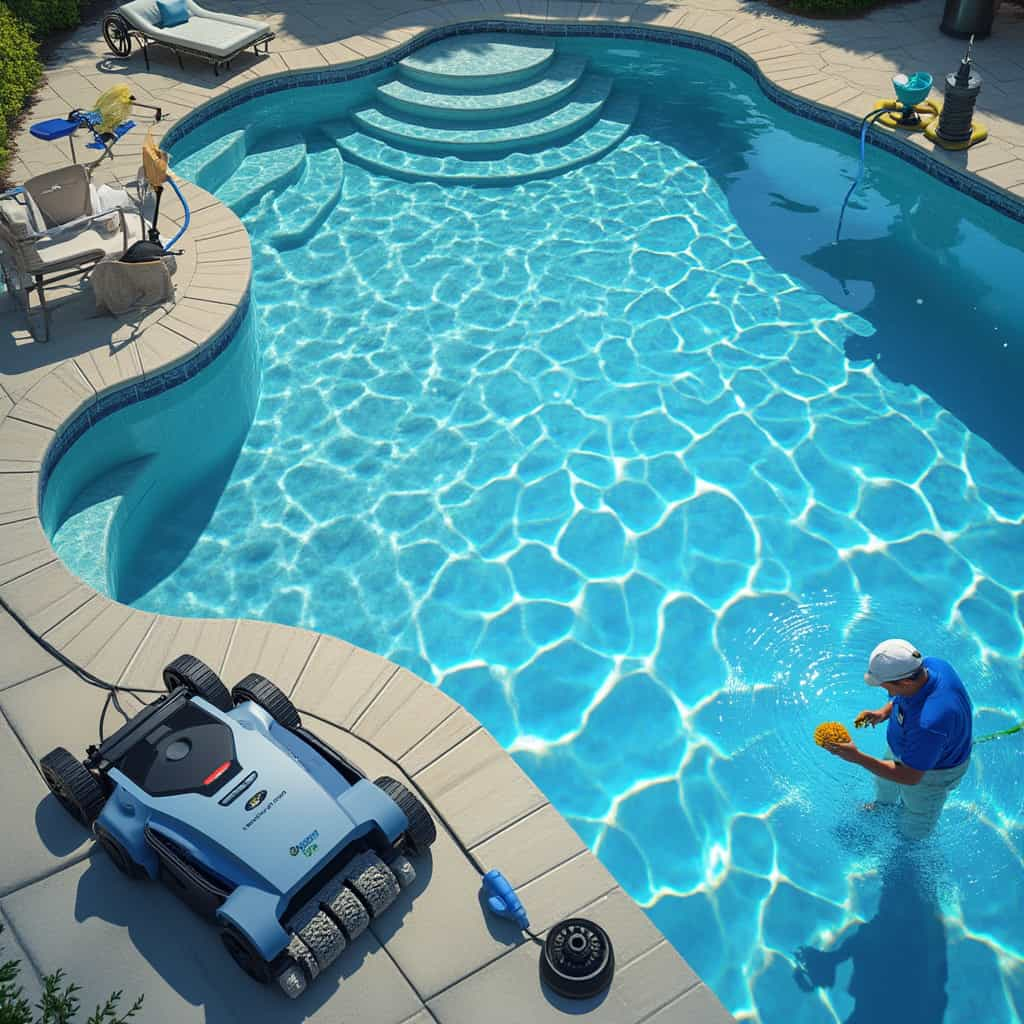Owning a swimming pool provides not just entertainment but also a personal oasis during the hot summer months. However, maintaining a crystal-clear pool requires diligent cleaning and upkeep. With a plethora of options available, choosing the appropriate pool cleaning method is an essential step for pool owners, ensuring it remains both a delightful and safe relaxation spot.
The first step in understanding pool cleaning options is to recognize the core components involved. The typical pool cleaning service encompasses tasks like skimming the surface of the pool, vacuuming the floor, cleaning the pool walls, scrubbing tiles, checking and balancing water chemistry, and inspecting the filtration system. Each task contributes to maintaining the health of the pool’s ecosystem.
One of the most favored cleaning methods is manual cleaning. This cost-effective approach involves using pool nets, brushes, and portable vacuums. Manual cleaning puts the pool owner in control, allowing them to address visible debris and stains. The overall cost is relatively low, fluctuating around $20 to $100 for tools, but requires a significant time commitment each week, which could be impractical for those with a busy lifestyle.
Robotic pool cleaners have emerged as a cutting-edge solution, combining efficiency with convenience. These automated devices are designed to navigate the pool on their own, often equipped with scrubbing brushes and powerful vacuums. Depending on their features, robotic pool cleaners can cost between $400 and $1,200. Despite the initial investment, many pool owners find the advantage lies in their ability to schedule cleaning sessions without supervision, saving valuable time.
Comparatively, suction and pressure-side pool cleaners, which connect to the pool’s existing filtration system, offer another layer of automated maintenance. Suction-side cleaners, priced between $200 and $700, use the pool pump to collect debris, while pressure-side cleaners, ranging from $300 to $900, use water pressure to move around the debris before capturing it in an attached bag. These options provide diverse functionality but often increase operational costs due to heightened energy use.
Chemicals remain a crucial aspect of pool maintenance. Chlorine, used to disinfect water, ensures the pool remains free from harmful bacteria and algae. Depending on the pool size, chlorine tablet costs can range from $50 to $100 per month. Additionally, alternative sanitizers like saltwater systems, though more expensive initially, provide a gentler experience on the skin and swimwear, reducing chlorine costs over time.
Turning to eco-friendly options, some pool owners are exploring mineral systems and UV pool cleaners, which aim to reduce chemical use. Mineral systems release silver and copper ions to fight bacteria and algae, offering softer water for swimmers. UV pool cleaners, while more costly upfront, use ultraviolet light to neutralize microorganisms, substantially reducing chemical requirements. Industry experts predict these systems will gain popularity among environmentally-conscious pool owners.
Cleaning services are another viable solution, especially for those who prefer leaving maintenance to professionals. Service packages can vary widely, with costs from $75 to $150 per month, depending on frequency and pool size. This option provides the convenience of expert care but could result in higher annual costs than DIY methods. Opinions from industry specialists highlight that regular professional maintenance could extend the lifespan of a pool and its equipment through expert interventions at crucial maintenance intervals.
One ancient historical practice still applied today is the use of water filters. Romans used sand filters to keep their bathhouses clean, a principle that modern sand filters in pools echo. Today’s filters are complemented by technological advancements, evolving from basic sand filters to diatomaceous earth and cartridge filters, each offering unique benefits from superior filtration to ease of maintenance.
Ultimately, selecting the best cleaning option depends on personal preference, lifestyle, and budget. While manual cleaning is apt for do-it-yourself enthusiasts, robotic cleaners and full-service packages appeal to those seeking minimal intervention. It’s crucial to weigh the upfront and ongoing costs against the conveniences offered by each method. For instance, while automation might seem pricey initially, the long-term savings in time and chemical costs could justify the investment for many.
You may also like
Buy a Suburban Detached Home: Opportunities, Costs and Considerations
As urban living becomes increasingly expensive, many prospective homeowners are looking toward suburban areas for more affordable housing options. This article explores the advantages and challenges of purchasing a detached home in the suburbs, compares market options, and provides insights into securing the best deals.
Why buy an apartment in the City Center ?
Purchasing an apartment in the city center involves a myriad of considerations, including financial, practical, and lifestyle factors. This article explores various proposals, compares cost-effective options, and highlights the potential challenges and benefits of city-center real estate acquisition.
Modern Bathtub: Symbols of comfort and style
Bathtubs have evolved from basic sanitary fixtures to luxurious symbols of comfort and style. This article dives into the latest trends, innovations, and models in the bathtub industry, providing insights into the current marketplace and offering recommendations for great value products.
Shower Innovations 2025: Latest Trends and Technologies in the Bathroom
As we venture into 2025, the shower industry is brimming with innovations, from zero-threshold showers to smart technologies. This article delves into the newest models, market trends, and the best price-quality offerings available, along with expert opinions and geographical purchasing trends.
